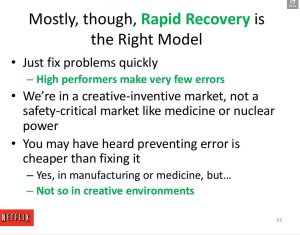When it comes to stimulating your creativity to create new work, is it better to live in a place that bustling with other creative activity or working alone outside of the influence of others?
This is something I have been thinking about for the last month or so, spurred by some contradictory observations I encountered lately.
When I was in NYC last January for the Arts Presenters conference, a person I was wandering around with observed that the work of NYC based artists, even relatively unknown ones, was more innovative than in other areas of the country. He attributed this to the fact that the artists are surrounded by so many others who were experimenting and striving with new ideas.
When I was living in Hawaii, someone who moved back from NYC made a similar observation that ideas that were new in NYC seven or eight years before were just gaining currency in Hawaii.
But earlier this month, in an interview choreographer Trey McIntyre noted that basing his company in Boise, ID had
…bolstered his creativity.
“Being surrounded by other artists and companies is more of a challenge than being away,” he says. “As a choreographer when you watch someone else’s work, especially if you respond to it … that’s the culprit for how a lot of work gets to look the same. I’m appreciative of being cut off that way. There are so many other things to be inspired by.”
Certainly, there are a number of non-mutually exclusive scenarios that can be true. You can be an artist in NYC that is doing exciting work that looks a lot like the exciting work everyone else is doing. Below a certain level of saturation, you can be both exciting and derivative.
Another plausible explanation is that people of talent can and will be creative anywhere. It is just that you get a lot more recognition of your genius in larger cities. Being a groundbreaking genius in Spokane doesn’t make you any less of a genius. It is just that only the residents of Spokane know about it.
I have started wondering if exposure to new influences via internet and social media channels can replace the need for traveling and living in the cultural centers. Especially if you are mindful about exposing yourself to work you feel is outside your taste. Because really, you run the same risk of having a blinkered approach to your art form whether you only view videos that appeal to you and your friends taste or only attend performances that appeal to those same tastes.
Granted, you have a better chance of receiving unsought ideas from street corner/subway performers as you travel about the city and meet new people than if you get all your ideas from your laptop in your bedroom.
My hope is that technology will allow interesting and innovative work to be developed in smaller cities and towns around the country. I confess that my interest in seeing this happen was redoubled this morning by a cynical reading of the news that theater companies in New York City’s five boroughs are now eligible to receive the Regional Tony Award.
The regional Tony was “created to honor theaters that did outstanding work outside of the unofficial industry capital of New York City…” My first reaction was that now the judges no longer have to bother looking at anything outside the city. Instead of rolling these theaters in with the Broadway houses or creating a new category, they put them in competition with every other theater in the country.
(This said, the American Theatre Critics Association members which vote on the award are dispersed throughout the country and NYC based critic Terry Teachout regularly sends out a call for suggestions of theaters around the country that he should visit.)
I will also admit that my first reading of the phrase “widen the pool” in the sentence: “administration committee changed the rules for the regional theater Tony to widen the pool of candidates and give Off Broadway and Off Off Broadway companies a shot at the recognition, which can help with fund-raising and publicity,” was that there were insufficient candidates in the rest of the country to give the award to.
Knowing that there are many theaters that are struggling across the country, my reaction to that was that there needs to be a reversal of that trend and a cultivation of theaters on a more local level. I later realized that I may have been reading too much into that, but maybe I wasn’t.
Ultimately, whether another theater outside NYC wins the regional Tony award doesn’t matter to me as much as investigating and hopefully perpetuating evidence that you can consistently produce creative, innovative, work in interesting, livable communities across the country and attract attention (and hopefully visitors) to your work there.




"Though while the author wishes they could buy it in Walmart..." Who is "they"? The kids? The author? Something else?…